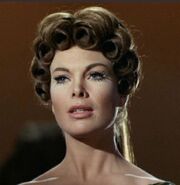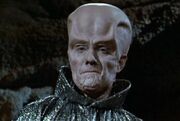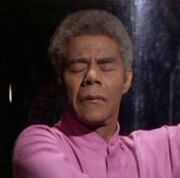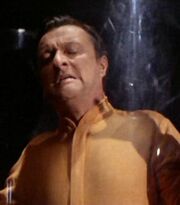I love Bob Haney and Jim Aparo’s run on Brave and the Bold; I have an unhealthy obsession with Wonder Woman. So Brave and Bold featuring Batman and Wonder Woman — that’s got to be good, right?
Well, not exactly. Haney and Aparo both seem more or less on autopilot here; it doesn’t suck, or anything, but neither is there any particular inspiration. Haney pulls out one of his usual plot gimmicks (some old geezer offers to give millions to Batman’s favorite charity if pointy-ears will rescue his daughter. It’s amazing how often this happens.) So Batman goes off, and there’s the usual Haney twists — malevolent, intelligent gorilla surgeons; Gotham City replicated on a floating barge; double-crossing heiresses, that sort of thing. Wonder Woman shows up, and Haney does his best to figure out why her presence doesn’t make Batman irrelevant. Maybe, I don’t know…she could not know her own strength until seeing Batman in danger causes her to free her inner Amazon? Sure, what the hell, that works. Meanwhile, Aparo entertains himself by drawing the protagonists from the boots down….
So good fun…but it never really fulfills the kinky promise of the bizarre splash page:
There’s some bondage/mind control for you in the best Marston tradition! Aparo seems to be especially having fun getting WW to twist around like a cat, curling up her fingers into claws. We get some more on the next page:
And…unfortunately that’s it for the super-heroes-as-mind-controlled-wild-animal subplot. It’s never actually even explained why Batman and WW are behaving like that; there’s one panel where Bats speculates vaguely about drugs or hypnosis, but it’s never followed up. Of course, the real reason is simply that Haney thought it would be cool/funny/sexy and make a good lead in. And then he just dropped it, because he got distracted. Haney doesn’t really write plots anyway; he just writes plot holes.
Still, I have to say; as far as versions of Wonder Woman go, this one has a certain aphasiac appeal. Haney doesn’t seem to have any great affinity or even enthusiasm for the character; he just sort of picks her up and drops her into one of his usual nutty plots, gratuitously noting each of her powers along the way (invisible plane! magic truth-telling lasso! amazon speed!) because that’s what you do in a comic. In that context, the scene at the beginning comes off in a similar, check the boxes kind of way — if you’ve got a Wonder Woman story, you throw in some bondage. And you might as well tie Batman up too, because, hey, he’s there, and why not?
And there’s something to that. Maybe it’s just the extent to which Haney so obviously doesn’t treat these characters as Mary Sues, or really as icons at all. He doesn’t want to honor them; he doesn’t want to desecrate them; he just wants to race through his story and have some laughs and come out the other end and get a paycheck. In that context, an Amazonian feminist avatar decked out in bondage gear isn’t any more or less ridiculous than a guy wearing a bat suit. Most latter-day Wonder Woman writers are tripped up because Marston’s WW is more coherent than your average super-hero, so when you try to put her into a storyline that functions differently than that propounded by her creator, things go awry. But Haney’s plots aren’t coherent; they don’t work anyway. Wonder Woman still looks like a nutty non-sequitor…but, in Haney’s world, that makes her fit right in.
_______________
This is part of an occasional series of posts on latter-day iterations of Wonder Woman. You can read the whole series here.
And since arbitrary links are sort of in the Bob Haney spirit — I’ve been posting some downloadable music mixes over the last couple of weeks. The last one is titled Book Radio Mixer, the one before was called The Old Gospel Ship. Click through the links for tracklists and downloads, if that appeals.
























